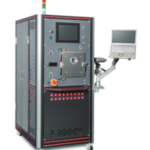
Do you know that there are many different types and functions of semiconductors?
Different types of semiconductors have different characteristics that perform computational functions, store data, control power, and convert light into electrical signals.
Since the semiconductors used vary depending on the electronic device, let us explain in detail what functions the semiconductors themselves perform.
Contents
discrete semiconductor
Semiconductors that have become a single function in a single element.
The single function with no complexity has already been standardized to a defined specification.
Example includes transistors and thermistors.

opto semiconductor
Opto semiconductors convert electricity into light and light into electricity.
For example, LEDs used for lighting and signaling.
Infrared LEDs are used in remote controls for air conditioners and televisions, laser diodes for writing CDs and DVDs, as well as in automatic door open/close switches and solar panels.
Optical semiconductors thus provide a visible representation of invisible electricity to the human eye.
sensor semiconductors
Semiconductors on detection
Sensors include temperature, light, color, pressure, magnetism, speed, acceleration and many others.
These information from the outside world are detected and converted into electrical signals, which are then controlled and processed based on the information obtained.
logic semiconductor
These semiconductors perform control, processing, and arithmetic operations.
CPU
The CPU is a typical device that makes up a computer, along with memory and HDD/SSD.
Also known as: processor.
It is always installed in a personal computer.
The computer receives data from the mouse, keyboard, hard disk, memory and peripherals and is responsible for control and calculation.
GPU
Semiconductors that perform the computational processes required for rendering 3D graphics.
They are connected to high-speed video memory and mounted on a graphics board, which is a collection of many processors specializing in rendering graphics.
memory semiconductor
Memory semiconductors are used as storage elements to electrically store and accumulate information and are available in various types.
DRAM
It is used in computer memory and is also widely used in consumer electronics (especially digital appliances).
For example, when notifications such as LINE are received while watching a video on a PC, this semi-conductor fulfils the function whereby the main unit remembers and displays the chat tool data.
They remember it on the backside while they are working.

flash memory
It is possible to electrically erase information in batches or blocks and write new, updated information.
They are effective for data storage and specialize in retaining and not erasing data even when electricity is not connected.
Typical examples are USB memory sticks.
The types and characteristics of semiconductors were introduced in this report.
Each semiconductor has its own function, which depends on the electronics used.
We hope that this report will make semiconductors more familiar to you.
Reference website:





